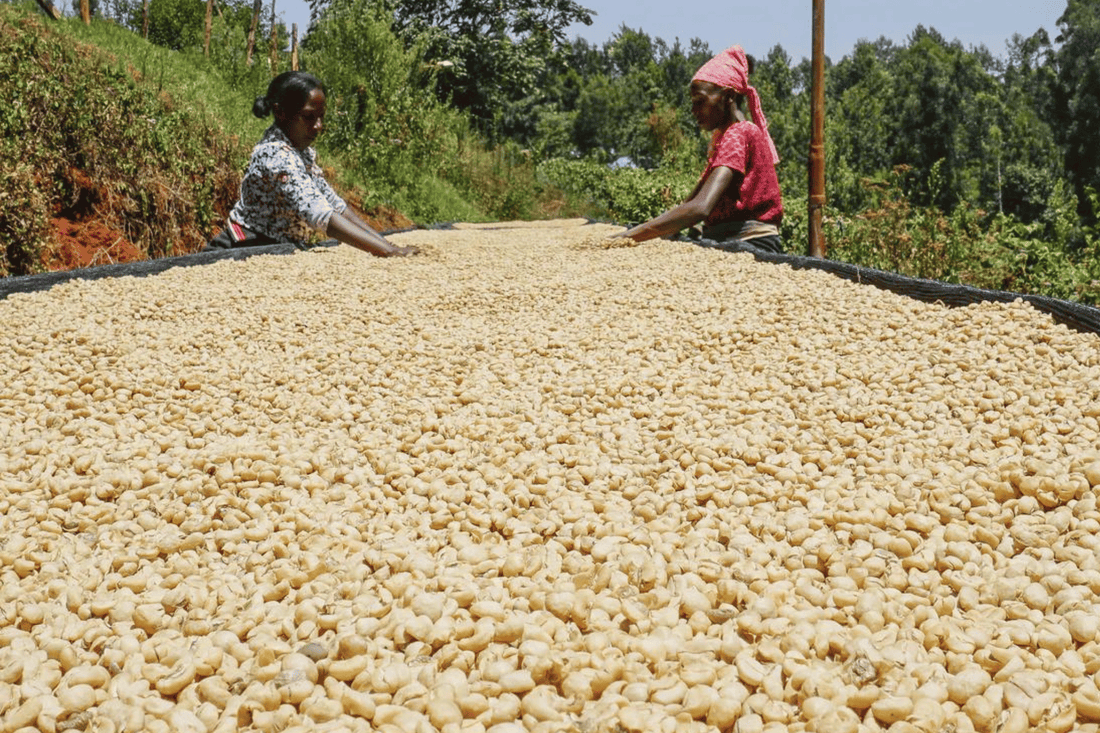Despite its proximity to Ethiopia, coffee was not introduced into Kenya till the late 19th century by European missionaries. In the early 1900s all plantations were owned by the European settlers with labour provided by the local people at no or minimal cost. Today some 6 million Kenyans make their living from the coffee sector with many private small farm holders.
The climate of mild and wet weather, combined with the elevation around Mount Kenya, Mount Elgon and the Western highlands alongside the nutrient-rich volcanic soil make for ideal growing conditions in Kenya. These conditions all contribute to Kenya’s coffee flavour profile full of acidity, sweetness and fruity notes – expect blackcurrant, honey, caramelized sugar, preaches and citrus with notes of lavender and toasted nuts.
Great care is taken in Kenya to protect the quality of the coffee with farmers strictly following the quality guidelines of the Coffee Board of Kenya. Most coffee is processed via the washed method which involves removing the pulp from the coffee cherry and fermenting and washing the beans. The harvest takes place between October and January.
The 5 major growing regions include:
- Mt Kenya region is known for its high quality coffee that is only hand picked. Expect citrus, blackcurrant floral notes delivering bright acidity and medium to full body.
- Eastern region is where coffee was first introduced. It produces mild flavour profiles with nutty, chocolatey and slight fruity notes.
- The Rift Valley has more recently started coffee farming producing medium acidity, medium body and vibrant floral tones.
- Western region produces balanced acidity, medium body and sweetness with sweet citrus, caramel and stone fruit flavour notes.

